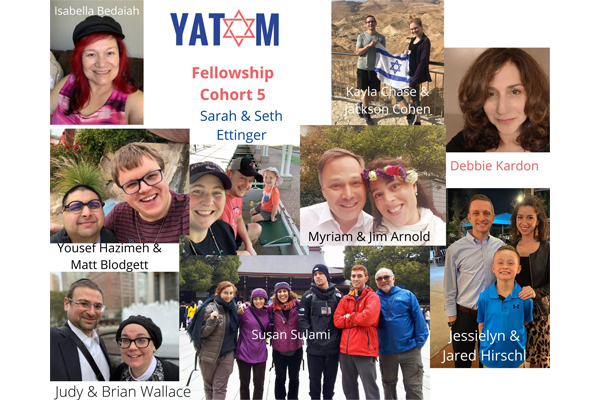I have always been led to believe, and prior research showed, that absolutely no Jews were buried in the old Tombstone Boothill Cemetery.
I am aware that in 1882 a young Jewish man by the name of Kiv Phillips, a deputy sheriff, was shot and killed in the line of duty, but his remains were shipped back to San Francisco, as were many others who perished in the streets of early Tombstone. But, recent research has uncovered (no pun intended) the name of one, Mr. Rosenthal (no first name), who died October 1881. A notice of burial was published in the Tombstone Nugget Newspaper. The newspaper reported the funeral was conducted by none other than the very first Jewish organization chartered in Arizona – The Tombstone Hebrew Association – and that Mr. Rosenthal was buried with full Hebrew rites in the Jewish Cemetery in Tombstone, Arizona Territory (today known as Boothill).
Even more puzzling, the research questions the whereabouts of one Mr. M. M. Steinthal, a Tombstone Jewish mining agent who was buried in 1890. The original Boothill Cemetery was closed in 1884 when the New City Cemetery, also known as Boothill, was established. It is recorded that Mr. Steinthal was exhumed and his remains moved, but who moved him and where he was later buried is not known. Many people were buried in a different section of the New Boothill when the community “congregations” established group plots.
The official records of burial should have been recorded; however, in 1912 the Tombstone Courthouse burned, along with its treasure of records.
The only proof of these individuals is in the local newspapers. The records of the Tombstone Hebrew Association have never been found. We are still searching.
My research of the 320 acres that made up Tombstone from 1881to 1884 confirms that Tombstone had more than 5,300 residents, many of them Jewish. Dr. Gustave W. Sichel, a dentist, set up practice in Tombstone in early 1882; A. H. Emanuel was the superintendent of the Watermill Mining Company; and Charles Feldman was listed as a miner, as were C. Gorin, Herman Lavin and the above-mentioned Mr. Steinthal. Lionel M. Jacobs, Harry Castle, Albert Springer and Mr. Solomon were all with the Cochise County Bank, which was owned by Lionel and his Tucson brother Barron Jacobs.
Former San Diego residents Adolph Levi, Albert Fortlouis (who had a tobacco store) and Louis Linoberg (who worked as a clerk in the R. Cohen hardware store) were all Tombstone businessmen. Phillip Gotthelf owned a tobacco store; Elias Laventhal operated a general mercantile; John Lippert and Abraham Peyser were barbers; Alfred Hartman operated a jewelry store; Samuel Black was a tailor; and Louis Habel was a salesperson at the Shoenfeld & Heyman Furniture Store. The Summerfield brothers – Levy, Morris and Herman – operated one of the largest dry goods stores on Fremont Street.
Another prominent businessman was Hyman Solomon, who moved from San Diego to Tombstone in 1880. Hyman was the manager of a wholesaler in fine wines and liquor called Oberfelder and Company general merchandise firm in Tombstone. In 1882 Hyman was elected treasurer of the city of Tombstone.
Mr. A. H. Emanuel came to Tombstone in 1880. Unlike many other Tombstone Jewish residents, he remained after the silver bust; he ran a blacksmith and wagon shop. He was elected mayor of Tombstone in 1896 and re-elected in 1898 and in 1900.
Only two businesses were recorded as being operated by Jewish women. Mrs. David Gotthelf operated a “French millinery” shop, and Mrs. H. Cohen had a fancy dry goods store.
Records are sketchy as to how many actual Jews made Tombstone their home between 1881 and 1883, but estimates are between 300 and 500 individuals. A synagogue was never built, although records of services are known. Jewish people came to Tombstone for the same reason everyone came – to seize an opportunity for success. However, the isolation of the town and the harsh desert climate meant that when the economic conditions deteriorated, there was little to stay for. Tombstone, like so many other small camp towns of the West, rose and fell with mineral discoveries. But in its heyday the Jewish population left a lasting mark on the Territory.
After the silver bust, most Jewish residents departed for other regions and other opportunities. Except, that is, for Mr. Rosenthal and perhaps Mr. M. M. Steinthal – both may still be residents of the Boothill Cemeteries. There has never been a marker for either grave. However, wherever they are, they too have made history.
Eileen R. Warshaw, Ph.D., is the executive director of the Jewish History Museum in Tucson, which was recently named one of the top five best Western Museums in the U.S. by True West Magazine, the oldest western history publication in the United States. A first-generation American, Eileen is a longtime Sheanachie (Irish storyteller) and historic preservationist. jewishhistorymuseum.org.






